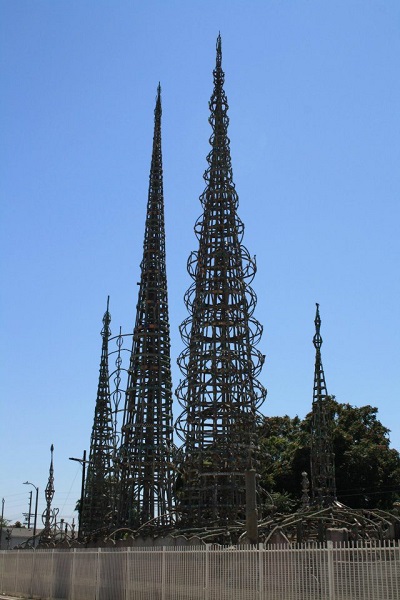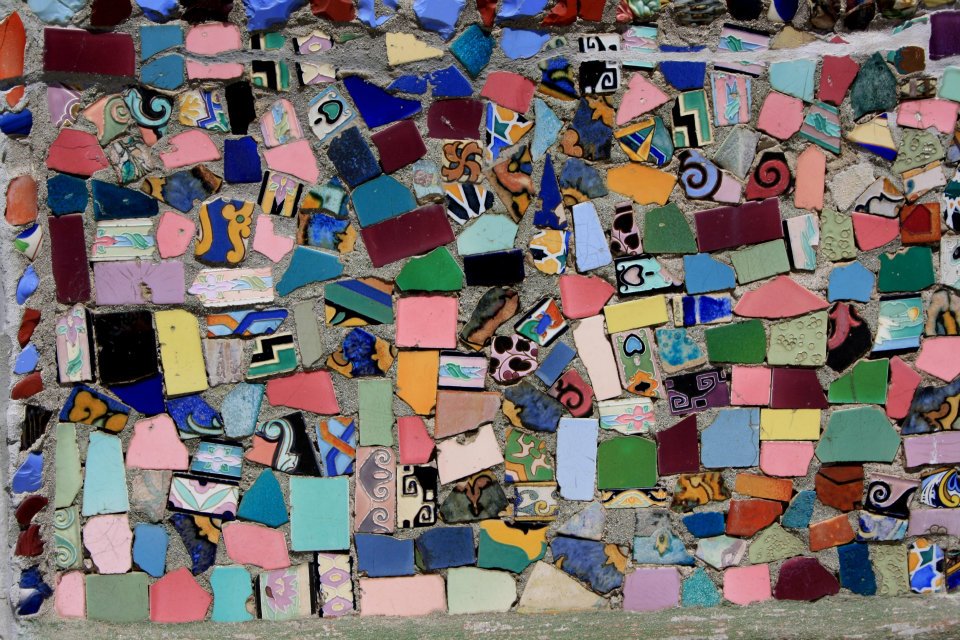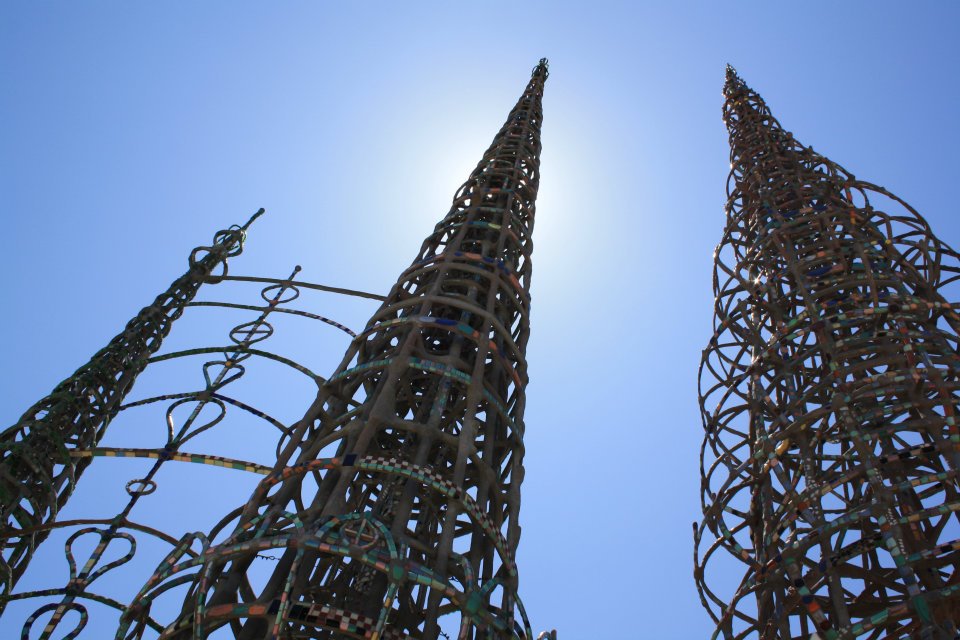Watts Towers
The Watts Towers are an installation of sculptures, towers and walls located in the Watts area of Los Angeles, California. They were built single-handedly by local resident Simon Rodia over a period of 34 years, beginning in 1921. The installation is remarkable for having been built without mechanical equipment, scaffolding or drawn designs. Instead, Rodia used simple tools and everyday items such as scrap steel, bed frames, pipes, and broken glass.
There are 17 major sculptures constructed of structural steel, wrapped with wire mesh and covered with mortar. The tallest of the towers reaches a height of 30 m (99.5 ft) and contains the longest slender reinforced concrete column in the world. His ‘ship of Marco Polo’ includes a spire that reaches 28 ft.
The sculptures are elaborately decorated with a Gaudi-esque array of ‘found objects’, such as broken bottles, ceramics, sea shells, pottery, tiles, and much more besides.
When Rodia, aged 75, moved away from Watts, the City of Los Angeles ordered that the towers should be demolished on safety grounds. But local campaigners devised a strength test to demonstrate their stability. A crane tried to pull them over but both it and its steel hawser buckled, and so the authorities decided to let them remain.
The local community then formed the Watts Towers Arts Center to preserve the installation. They are now listed on the Natural Register of Historic Places as a National Historic Landmark of Los Angeles.
[edit] Related articles on Designing Buildings Wiki
- A House for Essex.
- Building of the week series.
- Calakmul Corporate Building, Mexico.
- Ceramics.
- Dali Theatre and Museum.
- Dancing House, Prague.
- Dennis Severs house.
- Little Crooked House, Poland.
- Lotus Temple.
- Luxor Las Vegas.
- Recycling.
- Space Needle.
- Sustainable materials.
- The Big Basket.
- Theme Building, LAX
- Unusual building design of the week.
- Waldspirale.
[edit] External references
Featured articles and news
Latest Build UK Building Safety Regime explainer published
Key elements in one short, now updated document.
UKGBC launch the UK Climate Resilience Roadmap
First guidance of its kind on direct climate impacts for the built environment and how it can adapt.
CLC Health, Safety and Wellbeing Strategy 2025
Launched by the Minister for Industry to look at fatalities on site, improving mental health and other issues.
One of the most impressive Victorian architects. Book review.
Common Assessment Standard now with building safety
New CAS update now includes mandatory building safety questions.
RTPI leader to become new CIOB Chief Executive Officer
Dr Victoria Hills MRTPI, FICE to take over after Caroline Gumble’s departure.
Social and affordable housing, a long term plan for delivery
The “Delivering a Decade of Renewal for Social and Affordable Housing” strategy sets out future path.
A change to adoptive architecture
Effects of global weather warming on architectural detailing, material choice and human interaction.
The proposed publicly owned and backed subsidiary of Homes England, to facilitate new homes.
How big is the problem and what can we do to mitigate the effects?
Overheating guidance and tools for building designers
A number of cool guides to help with the heat.
The UK's Modern Industrial Strategy: A 10 year plan
Previous consultation criticism, current key elements and general support with some persisting reservations.
Building Safety Regulator reforms
New roles, new staff and a new fast track service pave the way for a single construction regulator.
Architectural Technologist CPDs and Communications
CIAT CPD… and how you can do it!
Cooling centres and cool spaces
Managing extreme heat in cities by directing the public to places for heat stress relief and water sources.
Winter gardens: A brief history and warm variations
Extending the season with glass in different forms and terms.
Restoring Great Yarmouth's Winter Gardens
Transforming one of the least sustainable constructions imaginable.

























